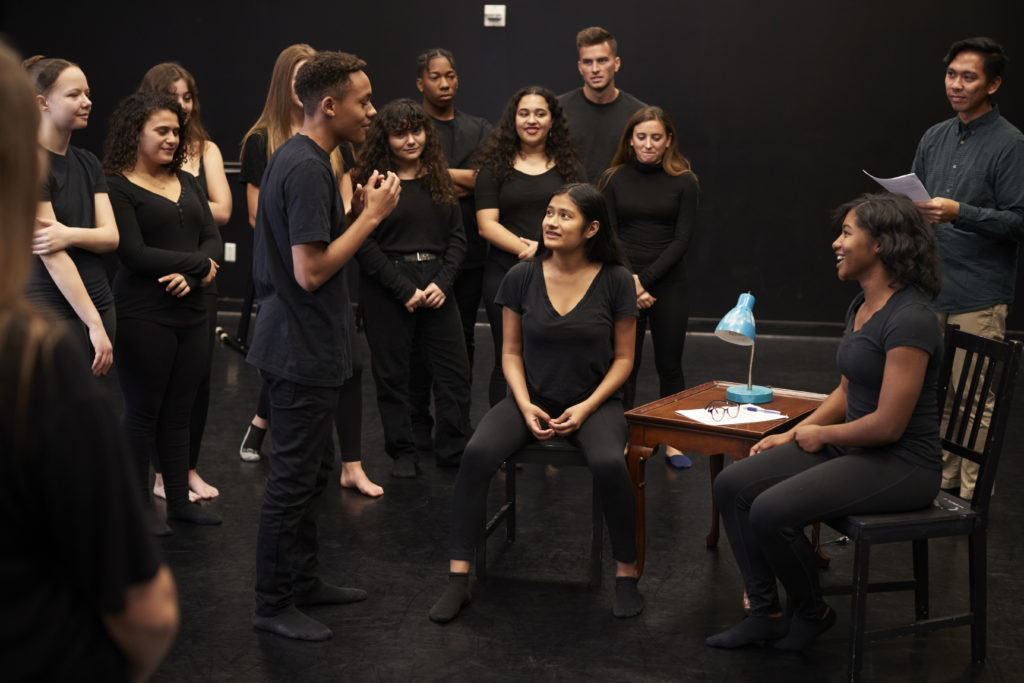A State Policy Vision for Arts Literacies Integration

The journey of a child through making meaning was one of the foundational learnings from the Arts Education Partnership’s work on The Arts and Literacies. Specifically, meaning making supports students to develop knowledge, awareness, appreciation and empathy of cultural traditions, experiences and interpretations. For students to make meaning, it is essential that they develop and master many competencies and skills throughout their lives.
In a K-12 school setting, personalized learning opportunities, including competency-based education, allow students to develop and master literacies, competencies and skills, especially when the arts are included. State policymakers and local education leaders have used various policy levers to promote more personalized learning experiences, including those related to the arts. The policies below highlight potential entry points for arts education leaders and advocates to engage with school leaders and education policymakers to incorporate the arts as a key lever in personalizing education for every student.
These include:
- Graduate profiles
- Proficiency-based grad requirements
- Model competencies
- Seat-time and alternative instructional models
- Teacher professional development
Policy Levers
States across the country have started to create more personalized environments through developing graduate profiles. Profiles or portraits of a graduate allow state policymakers to identify key skills and competencies students should master prior to completing high school. While the contents of these profiles vary across states and communities, the development allows stakeholders to identify what is most important for students and present an opportunity to include a focus on arts education and related literacies. State leaders have often used their profiles as a foundation for establishing associated competencies or proficiency-based graduation requirements.
For example, Idaho specifically focused on college and career readiness competencies that include 10 domains ranging from critical thinking and communication to career exploration and digital literacy. Each domain includes core competencies, subskills and performance levels to guide students to mastery. Vermont has a broad portrait of a graduate focused on learner agency, well-being and problem solving, among other domains, that was created as a tool to assist districts in the development of their own proficiency-based graduation requirements. The Vermont Agency of Education worked closely with education stakeholders to provide districts with sample graduation requirements for the arts, including performance indicators in dance, media arts, music, theatre and visual arts. Coupled with flexible pathways to graduation, Vermont has prioritized student agency and created space for new ways to demonstrate mastery of core content and skills.
While graduate portraits support the development of a vision for education, requiring the demonstration of the mastery of core competencies does not necessarily result in increased personalization and student agency in instruction. In response, state leaders have sought to provide flexibilities for school districts to implement innovative instructional models or support capacity-building at the local level to ensure meaningful implementation and student engagement.
In the 2021 legislative session, both Arizona and North Dakota enacted legislation that allows for flexibility in instructional time and for conferring course credit based on student demonstrations of mastery rather than relying solely on traditional assessment tools. With this flexibility, schools and educators may be able to implement interdisciplinary instructional approaches and engage students in arts-focused learning both within and outside of the classroom. South Carolina, on the other hand, focused efforts on providing professional development through the office of personalized learning in the state education agency to increase educator capacity to personalize instruction. With more flexibility to personalize instruction, arts and non-arts educators could seek out ways to collaborate to help enrich students’ learning across literacies related to the arts, including those that span other disciplines.
Some states have begun piecing these policy levers together to support a shift to a more learner-focused system. For example, Utah developed a personalized learning framework to connect the state’s graduate competencies to evidence-based practices. Social-emotional learning, equity and student agency are elevated as key components in the framework. Additionally, through planning and implementation grant programs, school leaders can build local capacity within their schools to implement more personalized approaches. The state board also adopted rules around learner-validated enrollment, which allows schools and districts to determine a student’s enrollment status using metrics other than seat-time.
Systems change requires coordinated efforts with clear goals for students. While the arts have largely been absent from the development of these policies, personalized learning provides a unique opportunity to implement interdisciplinary instruction that prioritizes development across literacies.
Additional Resources From Education Commission of the States
- Policy Approaches to Competency-Based Education
- Policy Solutions That Foster Competency-Based Learning
- State Information Request: State Profile of a Graduate
This post is part of AEP’s Continuing the Arts and Literacies Conversations blog post series. These posts expand on key ideas and topics from our Arts and Literacies Thinkers Meeting Series and from the resulting interactive resource. Through sharing their personal reflections and work experiences, guest authors explore a range of topics that span disciplines, age levels and education environments. You can read the first post in the series here.



